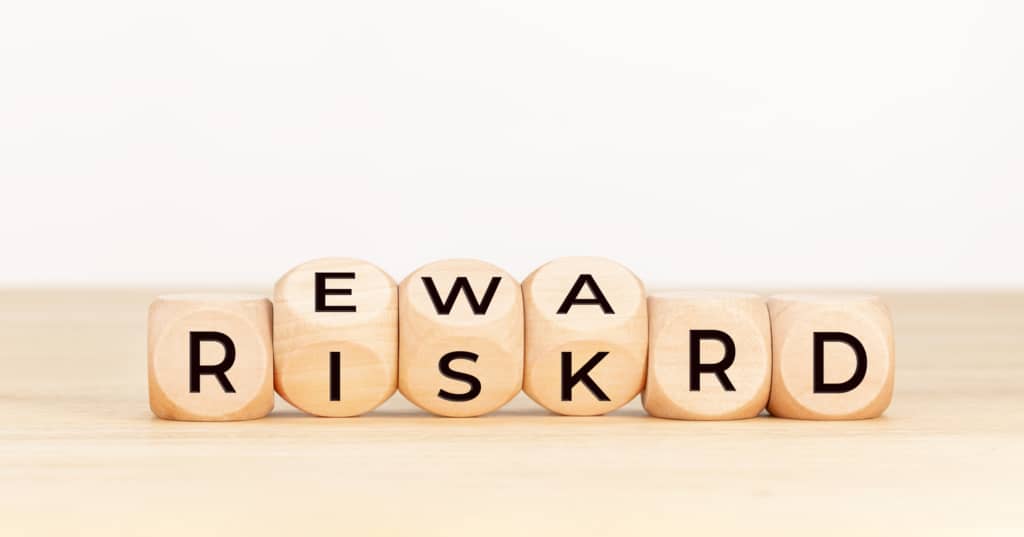Index fund investing is supposed to be accessible, inexpensive, and simple. More so, an index fund is meant to provide you exposure to stock investing in the most intuitive way.
Of course, that should be the case for everyone, regardless of investment experience.
But for someone who wants to get their feet wet with investing in index funds, it is so much more vital that they get good results inexpensively and safely.
With that being said, to not risk seem biased and subjective, this article is supposed to give you some tips on how to get the best index fund for you.
In other words, you will find no specific recommendations here. Only you can choose what index fund you will invest in and after reading this article, you will have the knowledge to make an educated decision.
If that sounds fair, we are ready to begin!
The Best Index Fund for Beginners in Terms of Risk

The first thing that makes an index fund for beginners ideal is low risk.
Generally speaking, index funds have a low risk for people who invest for the long term. But there are a couple of factors that can drive risk even lower. So let’s check those.
Go Big
First of all, you should pay attention to how big the companies that the index fund is invested in are. That is determined by what it’s called market capitalization or market cap.
Market cap is essentially the price the stock market has placed on a company. Generally speaking, the higher the market cap, the more safe an investment in a company is.
So, it’s better to go for an index fund that is invested in the so-called large-cap companies.
Some of the indices that can be considered large-cap are the S&P 500 and the DJIA. Finding an index fund that follows those should be easy.
Diversify
Next, you can further decrease risk by choosing an index fund that is invested in many companies from various sectors.
For example, the S&P 500 includes 500 companies from all sorts of sectors to better represent the broad market in the US. But you can also find indices that include companies from all around the world like the S&P Global 100.
For a full list of all the indices from all around the world, check out this Wikipedia page.
The Best Index Fund for Beginners in Terms of Fees

Now, there is also the question of how much investing in an index fund will cost you over time. After all, expenses can eat into your profits.
Expense Ratio
The first thing you should look for is the expense ratio. This is basically the annual management fees expressed as a portion of the assets under management.
It can more or less range from 0.02% to 0.2%, but in some cases, you can find a lower or higher one.
They are generally low as you can tell because index funds require a passive investment strategy. But that doesn’t mean you shouldn’t mind. Over time, these fees can add up to a significant amount.
Front-End and Back-End Load
Another very important type of expense when it comes to index funds is the so-called load.
Load funds basically charge you a fee upon either buying it (front-end) or selling it (back-end).
Of course, there are also plenty of no-load index funds which don’t charge you anything upon transactions.
Just be aware of that extra fee when selecting your index fund.
If you’re not planning on selling for a long time, a lot of back-end load funds usually remove that fee the longer your money is invested in them.
The Best Index Fund for Beginners in Terms of Performance

The third aspect of the ideal index fund for beginners is performance.
Now, there are two ways to assess whether the index fund you choose will be performing well in the future.
Historical Performance
One is by looking at how said index fund has performed in the past.
Historical performance, though, should be looked at after taking into account your investment horizon; or holding period if you like. It simply doesn’t make sense to be looking at only its performance over the last 5 years when you plan to buy and hold for 2 decades.
Tracking Error
The other way to determine whether an index fund has been performing well is by looking at the tracking error.
The tracking error is basically the deviation of the fund’s return from the return of the index that is supposed to track and is expressed as a percentage.
For example, an index fund that follows the S&P 500 and gives you a return of 11% in one year that the index has been up 12% has a tracking error of -1%.
Conclusion
When it comes to indexing, beginners should focus on getting a good deal. Especially if they are looking to invest for the long term.
What dose that look like? Only you know.
What’s most important to you?
- Safety? If that is so, you should prefer a large-cap index fund that follows the broad market.
- If it’s the cost, you should try to find the index fund with the lowest expense ratio out there.
- If you mostly care about performance, try to pick one with a return over time that seems satisfactory while also having a very low tracking error.
The point is to know what you want. After figuring this out, picking the ideal index fund should be easy.
Thanks for reading this article and I wish you success on your investment journey. If you found it helpful, please take a moment to share it.
And if you have any questions, feel free to leave a comment below and we’ll get back to you.
Take care for now…
Disclaimer: This information should not be viewed as financial advice. You should consult a financial advisor or do your own due diligence before you invest. The owner of this website and author of this article are not to be held liable for any undesired result by anyone who uses this information that is provided here in any way.

